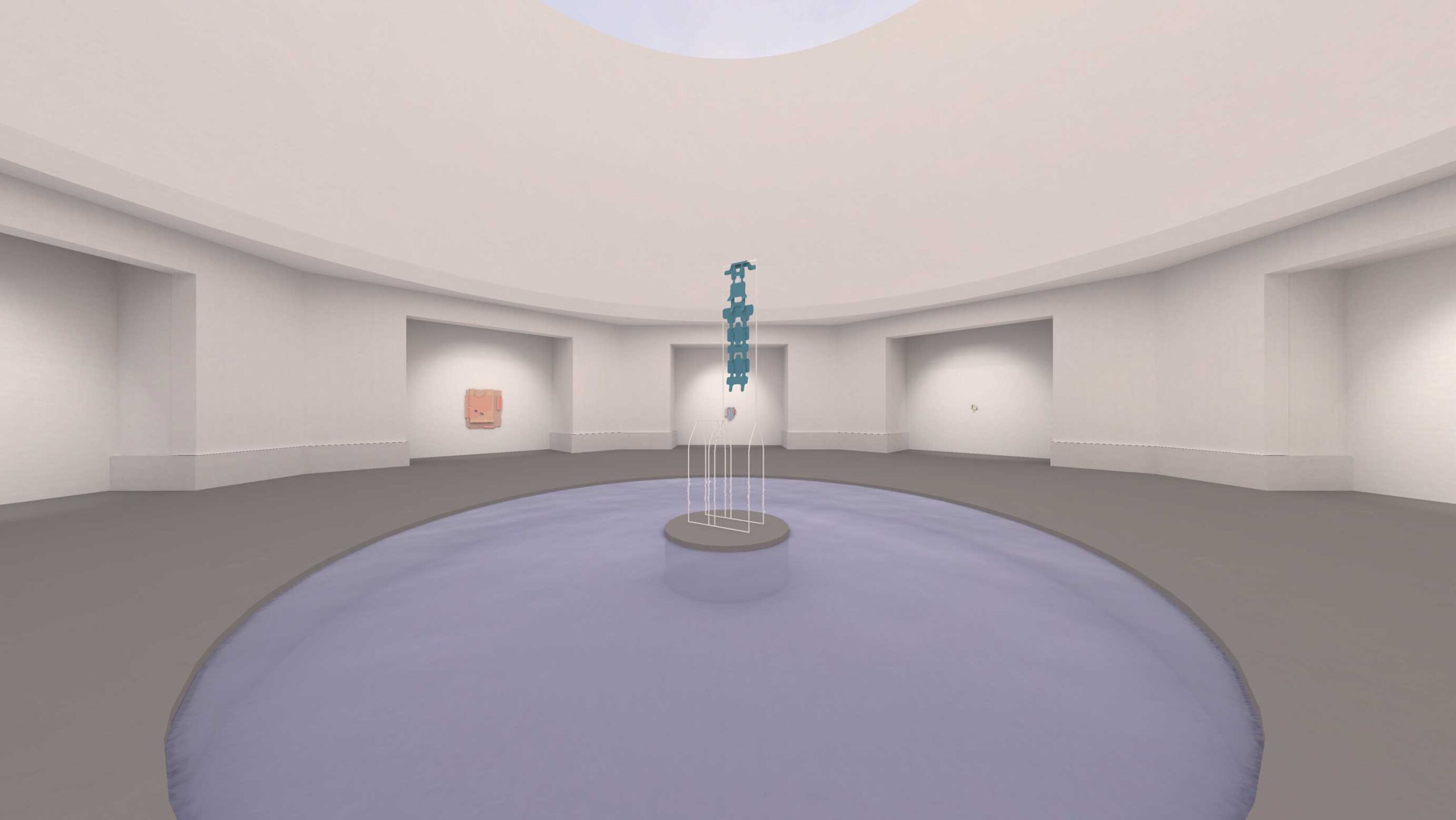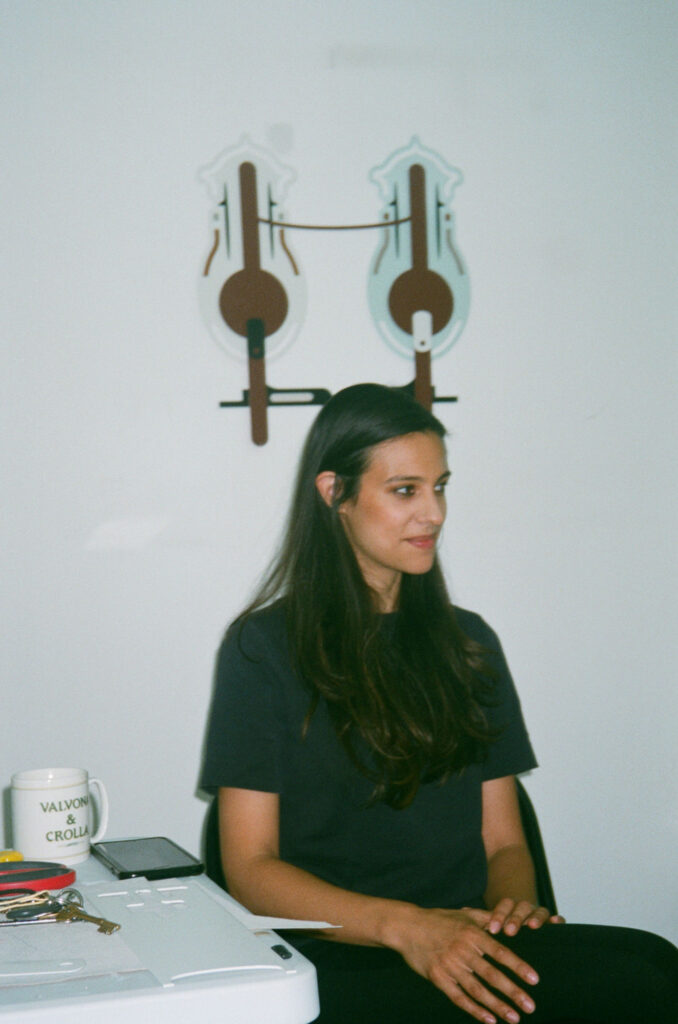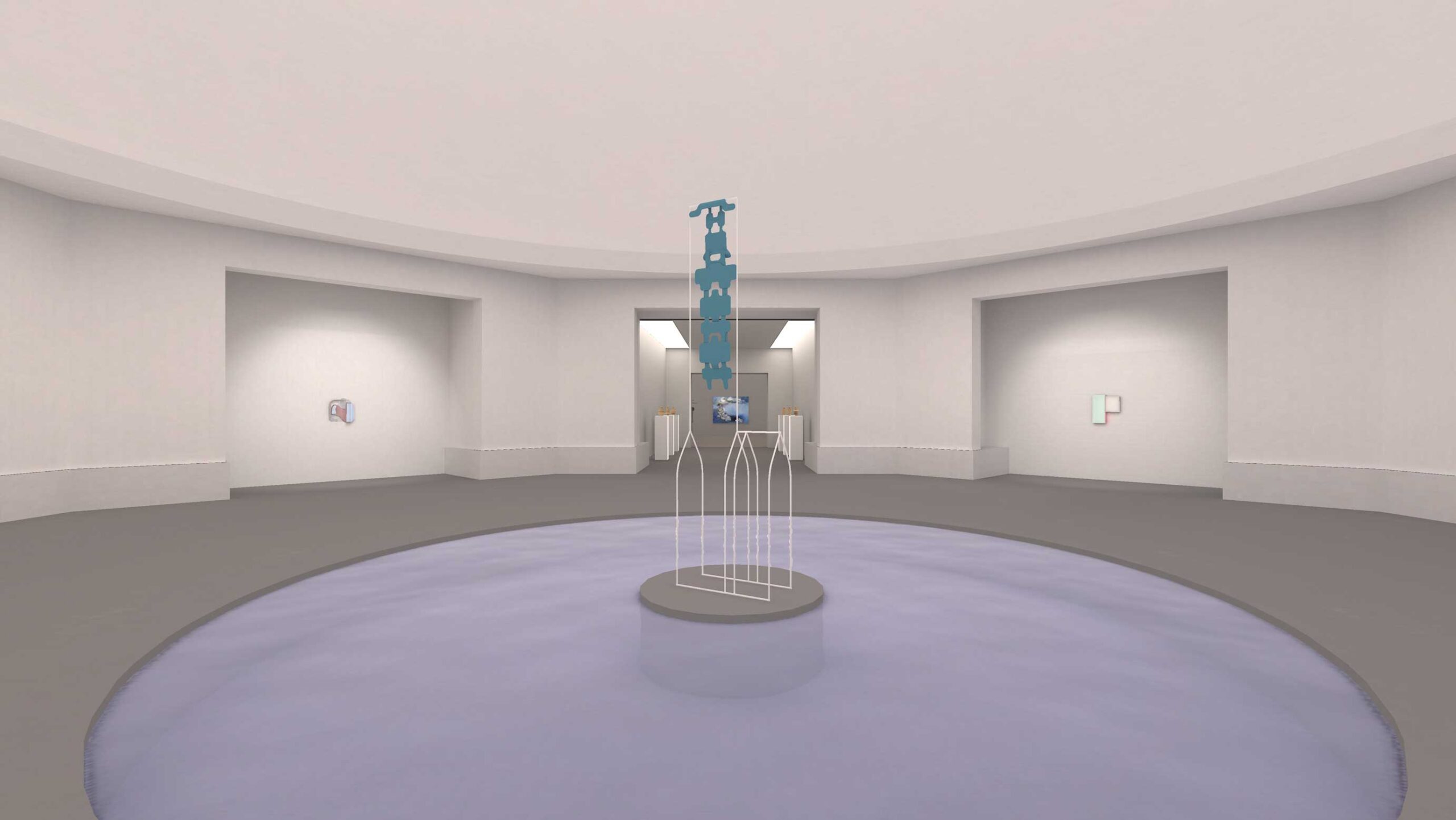Amba Sayal-Bennett is a visual artist who lives and works in London. She received her BFA from Oxford University and her MA in The History of Art from The Courtauld Institute. Sayal-Bennett is also a co-founder of Cypher Billboard, a public program run by the artist catering to billboard artworks and off-site projects based in London. She is interested in human and non-human assemblages, from our use of language to material encounters in the studio. Her work includes different variations of visual arts like projection, sculptures, drawings, and videos. She is inspired by the infinite compositional possibilities of regular geometries and mundane materials.
The foundation of her practice develops from the “endless potential for translation and resistance to fixity… in the language of geometry and line”. Her exhibitions include A Plot for the Multiverse, A Mechanised Thought, Plane Maker, Every Line Makes a Cut, and more. According to Sayal-Bennett, her sculpture installations and light projections are “forms of expanded drawings”. Amba’s journey into the arts took a turn when she enrolled in Art History Masters and her perspective on applied arts changed completely. Her work is interested in “the epistemological potential of the arts, namely its ability to produce rather than just illustrate the theory.” Her practice explores the “processes of abstraction (maps, writing, diagrams, etc.), looking at what they signal and silence and what ontologies they enact or what worlds they perform.” Along with abstraction, her work explores the use of language by humans, her encounters with materials in the studio, and scientific methods to understand the otherness in the non-human forms.
In her recent project called Bodies, she investigates the “performative dynamics with human and non-human assemblages”. This project was recently showcased at AORA III, a virtual space gallery that provides a platform to artists through virtual media. Sayal-Bennett describes the agency of materials in her work process and says “I am interested in how the work is never an expression or execution of pre-existing ideas that I might have, but how it emerges through the constantly changing relationship between the materials and myself. I think of this process as a cybernetic system that evolves through an on-going process of human-material engagement and feedback, and the creative process as an assemblage of human and non-human parts.” This project is driven by the idea of understanding the instruments, a “system created by the body working in conjunction with a material structure or object” and the agency possessed by the apparatus, materials, and process considering their non-human nature. She believes that non-human bodies have an active role in developing the work and often result in a “hybridized aesthetic”.
Amba’s process of materializing an artwork involves a transition from complexly composed drawings to three-dimensional forms of different forms and sizes. She uses construction paper, cardboard, overhead projectors, and waste found on the street that confronts the physical space of the viewer. The compositions are minutely detailed and unapologetically colorful which demands the attention of the viewer to analyze the geometry and trace the lines of the architecture. Her work is outlined with marker and graphite, the geometrical lines form shapes that are smeared with faded colored ink, adorned with delicate and amusing patterns composed of “dots and lines, loops and squiggles, bacterial and cellular forms that formulate a microscopic architecture” as described by Murtaza Vali, a critic and curator. Her work shifts with one’s vision, sometimes lying flat like a blueprint of a futuristic architectural plan or playfully taking the form of a face or body but never remaining fixated to any particular form. Her work hints and makes secret references but never declares itself. She calls her work “defunct-utopic and retro-futuristic” and so it seems. Her sculptures and installations take the form of an architecture drawn up by a master builder of the modernist era.
You can visit Amba’s ongoing exhibition here.
Text by Mariyam Fatima.
Images by AORA Space, and Dateagle Art.









